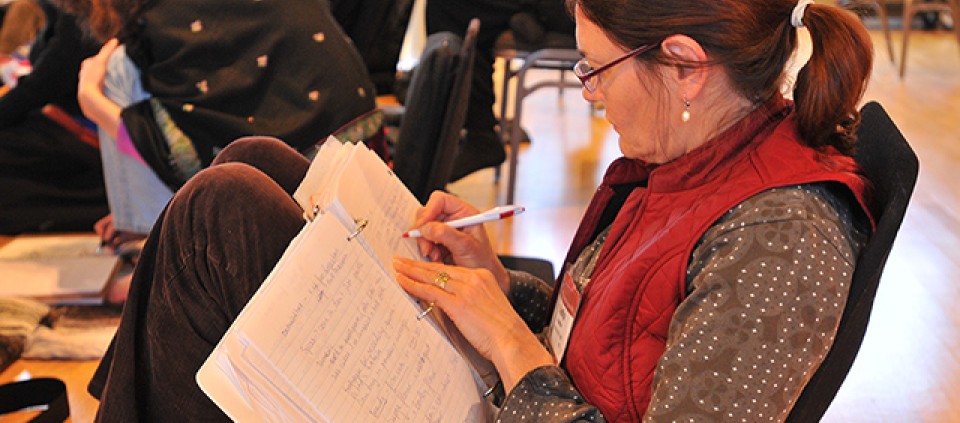Meditation and Journaling: Combining Practices to Reflect Your Inner World

“Who knows what will arise when we watch ourselves?” asks Kripalu Yoga teacher, Kripalu Schools faculty, and life coach Michelle Dalbec. By opening up to the richness of our interior life through meditation and journaling, says Michelle, we can invite deeper self-reflection and self-expression into our daily existence.
Both meditation and journaling create an “open-hearted space of discovery,” Michelle says, by letting things be as they are—not changing, not critiquing, but simply observing and noting our thoughts, feelings, and sensations as they arise. “If we look at a situation long enough through the lens of meditation and journaling, we might be able to shift our perspective on it,” she says.
“Everyone has a surface life,” Michelle explains, “in which we’re constantly reacting to the moments as they come. We don’t have to do much to stay connected to the surface, as it is in constant motion. But a relationship to our inner world requires us to stop and listen.” Meditation, then, hones our attention and expands our awareness by allowing us to pause from the busy-ness of our lives in order to delve deeply into the roots of our experiences.
Journaling provides a complementary practice: When we put thoughts to paper—or type them—we are able to clear our mind and gain perspective on any given situation. “Journaling gives our internal landscape a voice. It’s a chance to document our process, to reflect upon and release our longings and questions.” And this release doesn’t have to be exclusively through writing: Michelle points out that doodling can also count as journaling—however emotion decides to express itself.
“By combining meditation and journaling,” Michelle notes, “you can access the wisdom from the deeper layers of your being and develop a greater understanding of the messages they have to offer.” And though profound, incorporating these practices into your life doesn’t have to be time-consuming or elaborate. In fact, setting aside 20 minutes each day could be all you need to reap the benefits. Below is an effective exercise Michelle suggests that seamlessly integrates meditation and journaling—plus a bit of movement to start things off:
Move (five minutes). Stir up some energy: Do yoga poses, stretch, jump around, shake, make some noise—anything that lets you get in touch with your body to create a physical and emotional space conducive to meditation and journaling.
Meditate (five minutes). Once the energy is stirred, sit in a comfortable position, spine tall, eyes closed or gaze soft. Focus on the breath as you allow the energy gathered to settle and ground. Open up to your senses and welcome in all sensations.
Journal (five minutes). Express yourself from a place of spaciousness, allowing your journaling to be organic and intuitive. It could be freestyle—writing down with no direction or filter—or using a word or phrase that resonates with you (such as “without limits”) as a launching pad. “Write until you feel complete enough in the moment,” Michelle advises.
Meditate (five minutes). After you’ve completed journaling, pause, and then return to meditation. Observe the thoughts and feelings that arise from the journaling. Allow them to wash over you without judgment or attachment.
© Kripalu Center for Yoga & Health. All rights reserved. To request permission to reprint, please e-mail editor@kripalu.org.